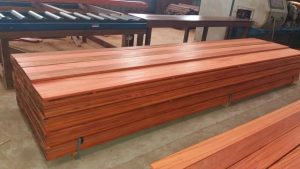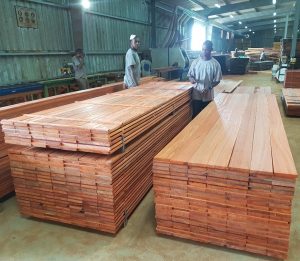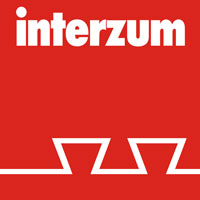FROMAGER
Fuma is one of the very recurrent and widespread wood types. Initially, it was mostly known in the tropics of America, but its been used for the production of Kapok seed fibres used for upholstery material. It has above all made a home in Africa.
Description
| Botanical name: | Ceiba pentandra |
| Overall character: | Light and airy wood with an uneven fibre flow and a simple pattern. |
| Color and structure: | The splint is light grey to yellow-white with a pinkish grey tint in some cases. There is generally no distinction between heartwood and sapwood. The pores are coarse and dispersed. They can be more common and visible in early wood than in late wood. The pores show up heavily on tangential surfaces, and often have a darker, spiral pattern that highlights the wood. |
| Characteristics/features: | The given figures can vary because of differences in density. Fuma (or Ceiba) wood is very rich in water while it is fresh. Its dry state is one of the lightest timbers still used commercially. The physical strength properties are low and can vary, even within the species. |
| Areas of use: | Due to its low strength properties, lightweight Fuma (Ceiba) timber is suitable for the production of boards, especially blockboards with wooden sticks in the middle layer. It can also be processed into lightweight disposable packaging. The panels can only be made of of Fuma (Ceiba), or the surface can be improved by being covered with a harder veneer on the exterior. |
| Sources: | https://www.holzvomfach.de |









